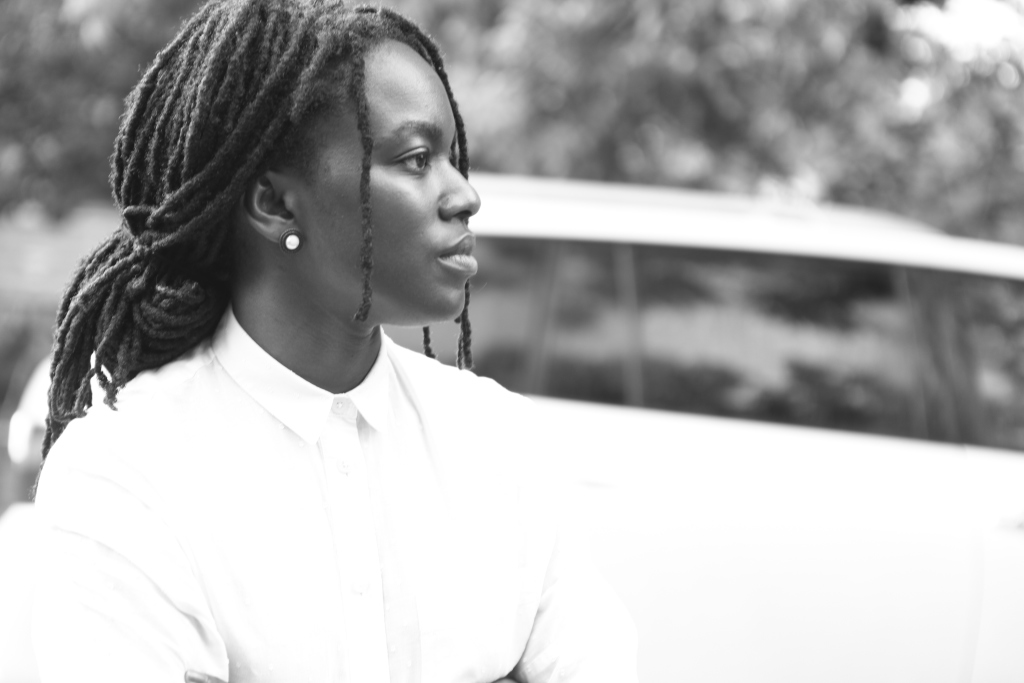
Shatara Michelle Ford is an American filmmaker whose feature debut, Test Pattern (2021), was released to virtual cinemas and theaters in February.
During the following interview we discuss the film’s characters and structure in great detail, so I’ll introduce the specifics here first. Test Pattern begins as Renesha (Brittany S. Hall), who’s clearly intoxicated and unresponsive, is being assaulted by Mike (Drew Fuller, who’s white). Following that a long section of the film depicts Renesha living in Austin, Texas, where she works office jobs, hangs out with friends, and meets a smitten tattoo artist named Evan (Will Brill, also white), who she eventually dates and moves in with. Around the midpoint of the film, Renesha suffers the rape implied by the first scene. And when she tells Evan what happened, he insists they go to a medical facility to procure a sexual assault examination. Most of the rest of the film depicts his unyielding efforts to do so with Renesha in tow—an experience that comes at her increasing chagrin, frustration, and trauma.
This interview was conducted last week via Zoom, and the transcript has been condensed and edited for clarity.
DIG: To begin with, I can tell you have a real love for your characters, who are never just functionary.
One of the best pieces of advice I ever got was to absolutely love my characters. And what I think that means in practice isn’t just, like, if you love a character that means you’re putting them in the best light and you’re showering them with good things. It’s much more about how when you love somebody you truly see them. And that means the warts, the flaws, the complicated dark bits, the things they don’t want you to know about—you sit with all of it. And it’s your job to present as full a picture as you possibly can of this person.
I have a background in sociology and cultural studies, so I’m really interested in how people behave. And I was a pretty alienated kid growing up, so I spent a lot of time watching human beings, and trying to understand what they were really trying to do, and what they were really saying [beyond] the words actually coming out of their mouths. All of that goes into a deep study and analysis of human beings, right?
And there is an anthropological side to the film, isn’t there? Not ethnography, really, but a feeling of sitting outside the characters and studying them. Yet at the same time, you’re often cutting into Renesha’s perspective. So we’re kinda bouncing in and out in a formal sense.
For me, it’s not really moving out of point of view, because we only see Renesha’s point of view… I think there’s an undercurrent there of being a person of color, especially [being a person of color] in a predominantly white environment. This is like a W. E. B. Du Bois thing, right, the “double consciousness.” I exist within myself, but I also exist as I’m being observed by others who do not understand me and do not understand my body. So I constantly feel this duality—and that’s the kind of duality I was trying to express in the way we follow Renesha’s journey.
So we’re internal with Renesha, but we’re also out here at arm’s length looking at Renesha. And whatever our biases are, whatever our politics are, whatever our experiences with this type of body in front of us are… that’s being put onto what we’re watching when we’re out here looking at Renesha. And then I’m constantly challenging you by making you sit with her internally at the same time. Because I think that’s another thing we fail to do quite often in renderings of the black experience: we don’t fully sit with people, and we’re not letting the internal experience actually drive the narrative. Which I think is essential, especially in a movie like this.
That helps to clarify my thoughts, because yeah, it’s not that the movie is going outside Renesha’s perspective—it’s more just that certain parts of the movie are specifically composed to reflect my position as a viewer, or the presence of a viewer in general.
Yeah, and that’s a tricky thing, because it’s not reflect your position like I was thinking about you, it’s more reflect your position because I’m giving you space, and so all you can do is lay your own impressions on the situation. And once you’ve made a decision about what’s happened to Renesha, or why she’s behaving a certain way, then I can force you in there with her, and in her head a bit more. And it challenges—or maybe validates—whatever else is there for you. So it’s like a constant checking in conversation. Which I think all black people in America have been doing internally since the beginning, hence why Du Bois could write something like that so long ago that can still resonate.
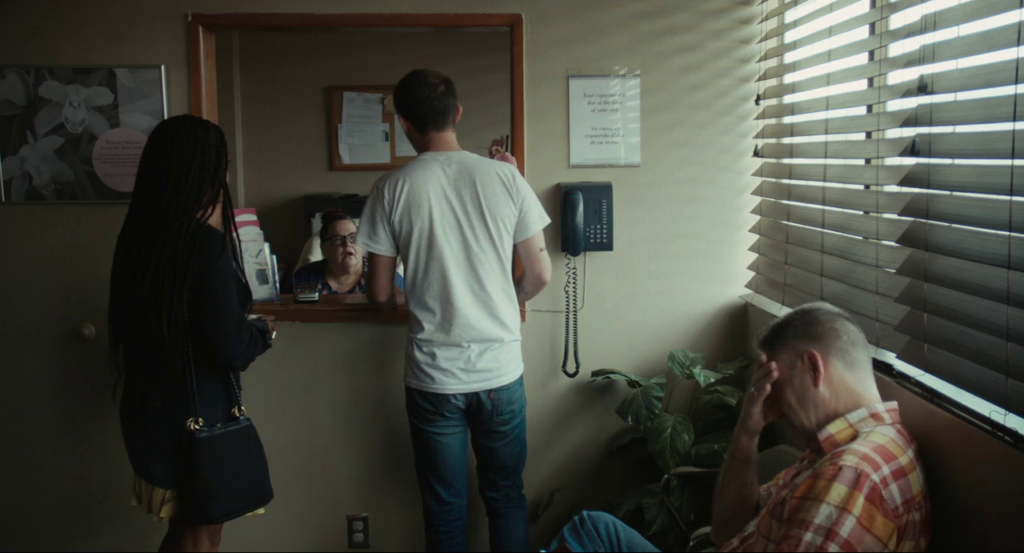
Going back to this idea of loving your characters as an artistic principle: Even in those moments when the movie is very much depicting bureaucracy, procedure, and specific forms of state-sponsored American oppression—even then it’s not really about the specifics of those bureaucracies, procedures, and oppressions, but instead about the characters’ experience of them. Like, you’re not getting too deep into the nuts and bolts of what’s going on behind the nurses’ station. But at the same time the film does wear some research, so it’s not just one [procedure] or the other [character]. Could you talk about finding the balance?
I think that human beings are most interesting when they’re under great strain. And I think that’s where character is fully revealed. So it doesn’t take much to look at some oppressive structures and then zoom in on human beings as they try to navigate those structures. And what makes Renesha and Evan so cool as subjects is that you have one person that the system is made for, entirely, so he’s moved through the world never questioning anything because it’s always worked for him. And then you’ve got another person who’s constantly falling through the cracks, to the point where she doesn’t expect anything to work for her, and kind of avoids engaging altogether.
And as a couple they clearly don’t talk about this. He’s not going to talk about it because why would you talk about anything that difficult or heavy. And she’s not talking about it because she has to deal with it everyday. But here we are now [following the assault], at a point where her circumstances are clashing up against his reality, and they don’t fit. And I think that’s something that we’ve been talking about across the board in this country during this last administration. Talking about how there seem to be several different Americas going on. And how some were created with a certain person in mind—and those who are not that certain person are kind of left fending for whatever they can hold onto. And sometimes you can pass through okay, but other times you’re going to fall through the cracks.
So as I was doing all this research about rape kits, as somebody who cares about reproductive justice and bodily autonomy, thinking about how we as a society talk about consent… again I kept thinking about human beings. And how all that stuff collides into someone’s lived experience being a bit more—I don’t know—murkier, or more difficult, than another person’s. And in this case, [the relation is between] a white cishet man and a black cishet woman in the south, so that was my conceptualization there.
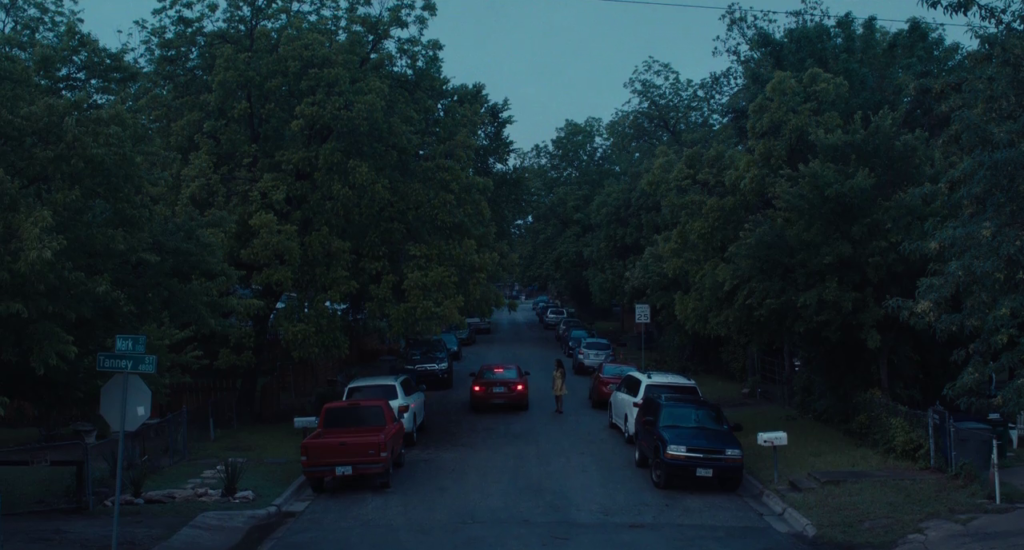
I’m now jumping around a lot, but the other thing I want to bring out about how I structured the film is that I was really driven by Renesha’s internal processing. I think what that means is that the structure kind of envelopes itself, and wraps around, and there’s no real sense of what “present day” actually is during most of it—
Yes—I’m sorry to cut in, but I’m so excited by this exact quality of the movie. It’s a more literary approach to structure, right? Because as a viewer I didn’t feel like scenes depicting past events were “flashbacks,” but just that certain specific pieces of information were being delivered at certain specific times.
I love the word that you use, because it reminds me of an influence that I didn’t even realize was there, but absolutely was there, which is Faulkner. This constant stream in and out of consciousness and experience as you’re processing a moment that’s surrounded by trauma. I thought about The Tree of Life (2011) with that too. That was also an experiment in how reflections on the past have informed a traumatic experience. I think those things are very much there, deep down in the DNA of [Test Pattern].
But something that was much more explicit, or at the top for me, was Eternal Sunshine of the Spotless Mind (2003). When I wrote the script, there were scenes that were out of order. But the order that they end up in the movie vs. the script is quite different. I had two editors on this film, a woman and a man. Which I did intentionally—I thought there was value to having a male and female perspective. But what was also really cool was that they were there at different times when I was making the movie. So Katie Miller, the woman, was there with me in Austin and she was cutting as we were shooting.
Katie put an assembly together that was true to the script on her last day before she turned things over to Matt [Tassone]. And I was horrified, as you normally are when you watch the first cut of anything. But I wasn’t really horrified because of the first cut per se—I was horrified because something about the structure wasn’t right. And it was bothering me and I couldn’t articulate what that was. All I could do was make her watch Eternal Sunshine of the Spotless Mind with me and say, this is the movie I’m thinking about and I don’t know why it’s doing that for me but hopefully I’ll get something out of it. And I think what that film invited me to do was use nonlinear structure in an emotional and psychological and internal space.
We do know there’s a certain chronology [in Test Pattern]. Which is that the assault, the rape, happens after she’s been with Evan for quite some time. But with her and Evan’s relationship, we’re not fully sure when those things happen: We’re not fully sure how long they’ve been together, and we don’t know how far apart the meeting at the bar and the meeting at the grocery store and the first time they slept together is… we really have no clue, because some of that doesn’t fully matter as Renesha’s processing information to understand why this person who loves her so much is doing this to her. And like, how has she created the conditions for this experience.
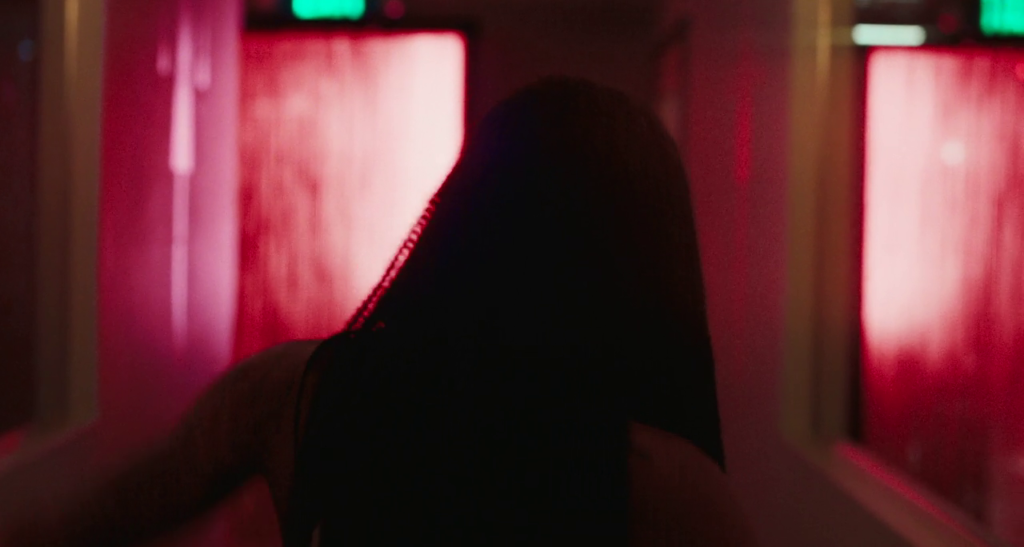
Then after Katie passed off the film to Matt, and Matt and I were going through it, he just kind of goes, oh! This is the structure of Goodfellas.
Men see one red tint in a prologue scene and suddenly everything’s Goodfellas.
That was something that really drove it. And talking about Scorsese films… The Departed (2006) allowed me permission to give you exposition without giving you exposition, when what I’m really doing is setting up chess pieces that are then going to fall down. If you think about how The Departed functions for the first 15 or 17 minutes before the [title card] rolls, there’s a lot of moving parts that come into place so that we can understand how these people overlap and intertwine and conflict with each other. And what I took from that film was that the title sequence comes when it comes because Scorsese’s saying to you that [everything prior] is important information that you need to know to understand how the game is played [after that]. And I think it’s the same idea for this film: There were simple, fundamental settings that needed to be established before we can even let the real story happen.
I’ve gotta say that I don’t think your film is well served by its synopsis. Like, there’s an extent to which it’s been presented as a procedural [the IMDb for instance says “a Black woman is sexually assaulted and her white boyfriend drives her from hospital to hospital in search of a rape kit”]—but there’s a whole half of the movie before it even reaches that point.
And yet, on the other hand… the opening half with Renesha and Evan is totally colored by the inclusion of that first scene, which frames the whole film around her experience of the assault. So while that Renesha and Evan section at the start does play almost like a romantic film, in one sense… there’s still a sense of dread coming through, and a sense of a trip to the guillotine coming through, because of the first scene.
You told Filmmaker Magazine that “I’ve gone back and forth about that opening scene… there were moments over the past three years where I’ve absolutely hated that scene. I hated that I did it and I hated that I placed it first, then I’ll go back and be like, ‘Actually, no, I knew what I was doing.’” How does that choice play to you now, as a director or as a viewer?
That sense of dread… it’s complicated. I think I’ve said this a few times, and it’s hard to explain, but I do think that being a dark skinned black femme in America is pretty harrowing most of the time. But although that’s the case, there’s still a lot of lightness and joy that you can have in moments. I feel like I’m constantly holding many feelings at once. And I’m not necessarily sure if that’s the same experience that’s shared across the board by all human beings in America, but it’s definitely my experience. So—and the decision to have that first scene or not have that first scene is related to this—what I wanted to do was create an environment where there’s constantly an overarching sense of dread and an impending sense of doom. And maybe sometimes that… doesn’t feel legitimate? As in, there’s a heavy, almost paranoid feeling. Which, by the way, is what I feel most of the time, wherever I am. Like, all of the time. And sometimes it’s warranted and sometimes it’s not… it’s fed by compound experiences upon compound experiences over a long period of time. But that was the idea that I wanted to create for this film.
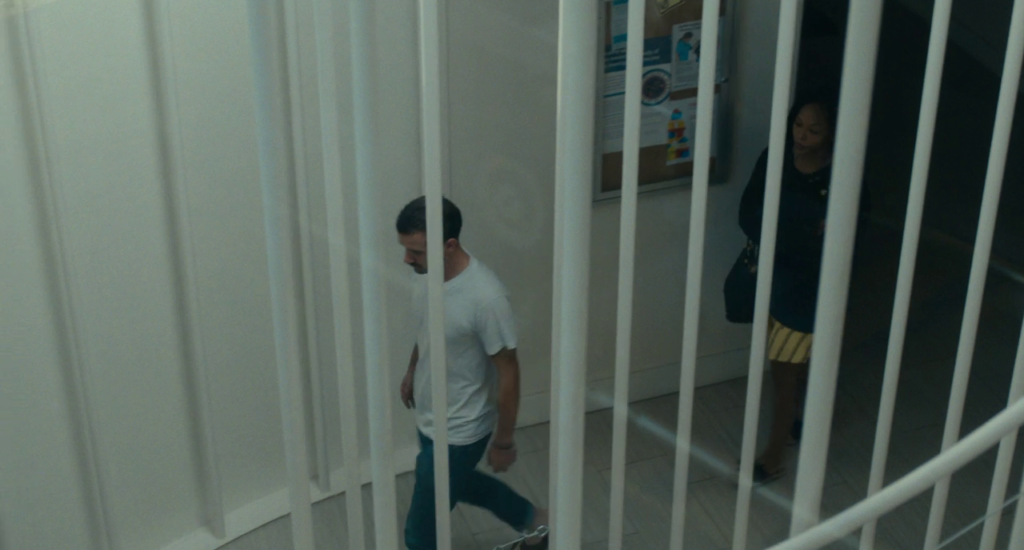
Another thing that I knew I absolutely needed to do is give the audience information about what my thesis statement effectively is. And without belaboring the point—I needed to do it in the most economical way possible. And what I thought was, okay, why not put this scene first… because in my opinion the thesis of this film is that this experience this woman has had, we absolutely know has happened even though we haven’t fully seen it. We don’t need to fully see it. We have all the information in front of us.
And that’s, again, a kind of thesis statement I have about being a marginalized person in America, in a society that doesn’t fully work for or center or think about us. When some sort of “bias related” incident happens—when Meghan Markle says that she’s experienced tons of tacit and explicit racism—we shouldn’t need to have an investigation to believe her. I think there’s a whole bunch of hints there to tell us that that’s absolutely what’s going on. And that’s the idea [in the film].
You say “sometimes it’s real, sometimes it’s not”—the “sometimes it’s real” cancels out the “sometimes it’s not,” does it not? And that’s why the first scene is effective: its placement creates the psychological space where even when “it’s not,” it’s still real.
That’s exactly right. And the hesitancy to have that scene go first was very much about me wondering if it was still too much. Not kidding. I thought, god, is this an extreme way to start a movie? Even though we see nothing, and everything is implied. But ultimately the decision was to keep it there, because Matt and I both agreed that it gave us this really important piece of information that we absolutely needed to know. It needed to be there.
The other thing about this is… I got notes from executives who I knew or am friends with or who just saw the movie and think very differently than me. And one note that I kept getting was, that’s a really good idea to put the [assault scene] up top because that’s going to keep people really engaged. And that’s a very fair note about the first 20 minutes of my film, the romantic comedy [segment]. But you’re either into it or you’re not into it.
And going back to your synopsis point, I think there’s a lot of people who maybe gave this film like 10 minutes. Because they’re expecting another thing—they think it’s going to be SVU or something like that. And instead it’s like they’ve turned on some romcom—and they don’t really get how we’re gonna get to that [SVU] point. I think the structure itself was an incredible risk, and one that had I been doing the film commercially I wouldn’t have been able to get away with at all.
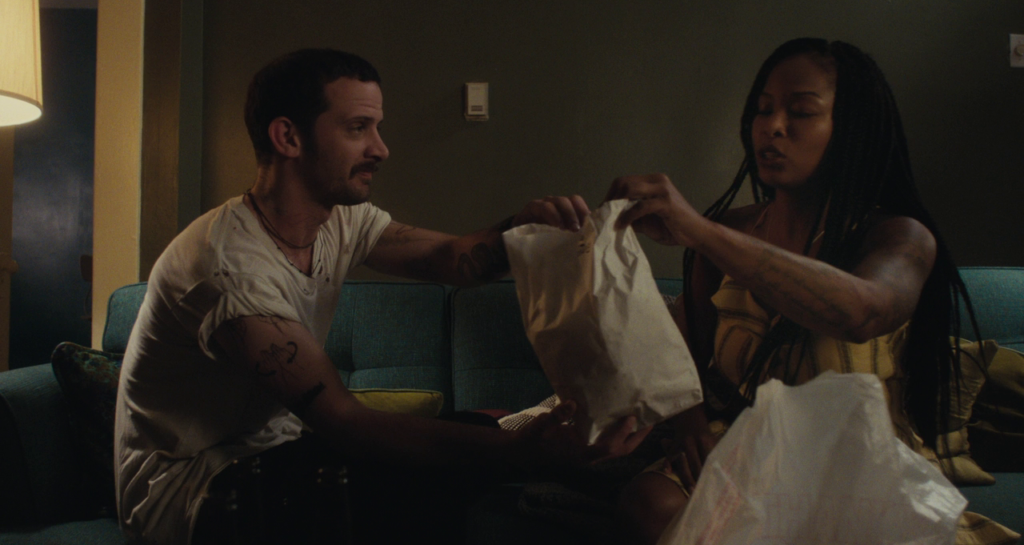
Something I really hoped I was doing, as we talk about loving our characters… I see Evan as somebody who decided to be really brave one night, and go for something that he would never normally do.
You mean when he first asks Renesha for her phone number at the bar?
Yeah, I think something about Renesha inspired courage in him. And then when she challenges him [shortly afterwards], we get a little hint of who he normally is—he doesn’t fully communicate. So I always knew that Evan’s failure, or his downfall, was going to be not communicating.
I think you’ve said this word in other interviews, but to me this is what brings out the distinctly tragic element of the movie. Because I got a feeling that what you’re depicting in that first 20 minutes between Renesha and Evan, especially after the grocery store, is a relatively healthy and productive relationship.
Absolutely.
The tragedy then comes out in the film’s implicit suggestion that the assault is stressing fault lines that were already there, even during that “healthy” stage. And in that, Test Pattern seems to suggest that these fault lines are ingrained not just in this relationship, but in relationships, period. And that spikes the film with such a sadness, does it not?
Absolutely, I think it’s deeply tragic. And again—by design. In terms of what’s healthy vs. what’s unhealthy, what are good boundaries vs. bad boundaries, and how does that all relate to consent and power… I had this idea in my mind that the audience always needs to see an example of something done right before seeing it done wrong. And so Evan and Renesha’s courtship in some ways mirrors what happens with her later [on the night of her assault]. She’s in a bar, there’s drinking, there’s dancing, but everything doesn’t feel like it did when she did it with Evan.
The idea is that Evan was always very cautious, and aware of what Renesha’s boundaries were. He was constantly reading her body language—he might’ve been misinterpreting it, but he was constantly checking in on those things. So the first time they sleep together was a really important scene that we mapped out very deliberately, talking about, what does healthy consent look like when it’s enthusiastic and ongoing? He checks in on her, and there are very clear signals. Even the decision to show good sex—as in, what a woman interprets as good sex—was really deliberate and important. And the use of a condom too, all of that was thought out really clearly in terms of, what do we want the baseline to be? Because if we can set the baseline, then anything outside of that… people will be able to feel it.
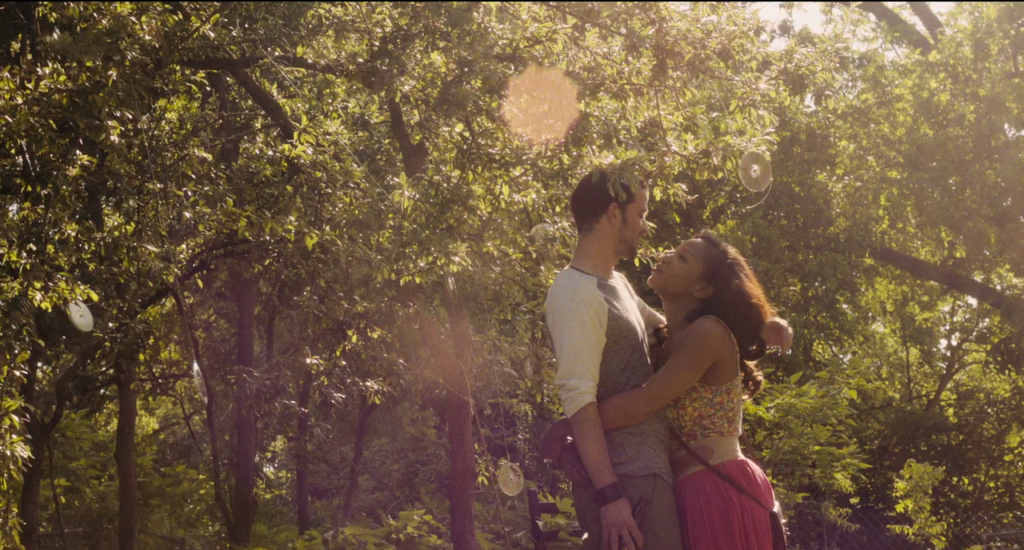
That’s what makes that primer of the first 20 minutes so important. Because Evan approaching Renesha is just like any guy approaching anybody, any person approaching anyone. The idea is that everything starts out on a semi-level playing field, and then power dynamics kind of pull themselves out, and with each new decision or rebuff the dynamics change and shift.
Which speaks to my interpretation of the film as depicting a kind of virus inside American relationships… its suggestion that if you’re dating anyone other than yourself, there are going to be these inequalities and fault lines that further experience will not mend but only stress worse.
We all have power differentials. There’s no relationship that doesn’t. Work relationships, friendships, all of it. And I think the only way we can be able to move on through any kind of conflict is to have some kind of ownership over that—to recognize where the differentials are. And to participate in a really active and aware movement towards reconciliation.
I’m kind of starting to talk about restorative justice at this point. This is what we’re talking about over the last few months as we talk about abolishing the police and everything else. And what I’m asking is, how do individuals deal with harm? How do we make good after creating harm? We’re all susceptible to it—we’ve all harmed someone.
And I think that relates to Evan and Renesha’s relationship in that… The fracture isn’t the ingrained patriarchal stuff, and it’s not the racial stuff either. The fracture is the lack of communication. They’re just not good at communicating. Especially Evan. And in this particular moment, Evan is the one who needed to talk more, who needed to apologize, and who needed to take ownership of what he’s done.
But another failure of communication, and this is a power differential as well, is: What would the movie have looked like if Renesha had woke up in Mike’s bed, and Mike sees that she’s distraught, and Mike says, oh my god, are you okay, and she says no, what happened last night, and he’s honest about what happened, and she says that is not what I wanted, and he says I’m sorry, I got my signals crossed, I don’t know—what can I do? That would’ve been a very different situation. That would’ve been a very different film. And I know that I’ve been in experiences like that where I would’ve loved for someone to just acknowledge the very obvious thing, which is that they took something too far when they were in a position where they could get away with that.

